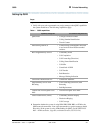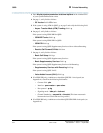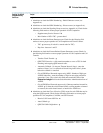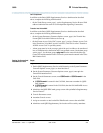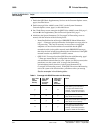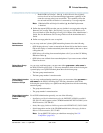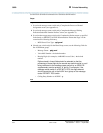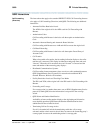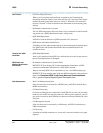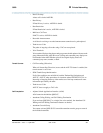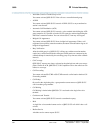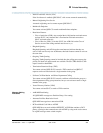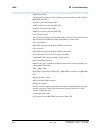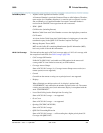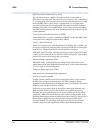
QSIG
379
Administration for Network Connectivity
555-233-504 — Issue 1 — April 2000 CID: 77730
B Private Networking
QSIG Interactions
Call Forwarding
(Diversion)
The interactions that apply to the standard DEFINITY ECS Call Forwarding features
also apply to Call Forwarding (Diversion) with QSIG. The following are additional
interactions.
• Alternate Facilities Restriction Levels
The AFRL of the original call is the AFRL used for Call Forwarding with
Reroute.
• Authorization Codes
Call Forwarding with Reroute is denied to calls that require an Authorization
Code.
• Automatic Alternate Routing and Automatic Route Selection
Call Forwarding with Reroute uses AAR and ARS to reroute the original call.
• Call Detail Recording
Call Forwarding with Reroute is denied to calls that require Forced Entry of
Account Codes.
• Call Transfer
When a forwarded call transfers, the forwarding indication displays to the caller
until the call is answered. This display includes the trunk group name and word
“forward.” When the call is answered, the word “forward” is removed and the
name and number of the answering party displays.
• Distributed Communications Systems
Call Forwarding feature transparency does not exist on calls tandemed between a
QSIG (Supplementary Service protocol b) network and a traditional DCS
network. However, the basic call continues.
• Facility Restriction Levels and Traveling Class Marks
The FRL (and TCM) of the original call is the FRL used for Call Forwarding with
Reroute.
• Forwarding and Coverage
If a coverage point is a number that routes over an ISDN (Supplementary Service
protocol b) trunk, QSIG diversion information is not passed to the coverage
switch.
• QSIG Name and Number Identification
Availability of name and/or number display at the originating and diverted-to
users depends upon how QSIG Name and Number Identification has been
administered for the switches involved.
• Terminating Call has Coverage Active
If a call is forwarded off switch, the terminating switch has call coverage
activated, and the criteria are met, the call does not route to the forwarding party’s
coverage path. It routes to the terminating station’s coverage path.



